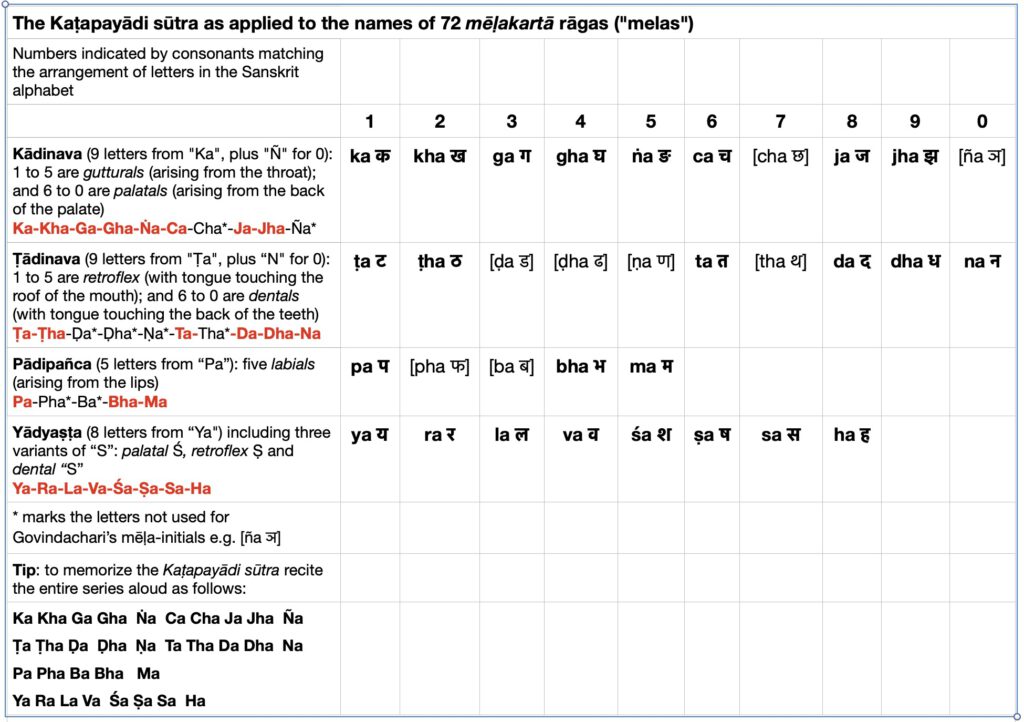The Kaṭapayādi sūtra is an aid to memory or “mnemonic system”.
Its name corresponds to a “thread” (sūtra), here provided by the initials of four sets of letters within the Sanskrit alphabet:
Ka Ṭa Pa and Ya
A total of 33 letters are distributed among ten numbers including 0 (zero):
K (1st) to 9 (nava = 9) + 0 = 10, Ṭ (1st) to 9 (nava = 9) + 0 = 10, P (1st) to 5 (pañca = 5) = 5, Y (1st) (aṣṭa = 8) = 8
Note:
- each letter is associated with a particular number from 1 to nine or 0 (zero)
- there being more letters than numbers, each number corresponds to several letters:
four letters (1, 2, 3, 4, 5)
three letters (6, 7, 8)
two letters (0) - not all the available letters serve as key syllables in Govindachari’s scheme of 72 mēḷakartā ragas (e.g. only “N” and “S” are used to indicate “0” and “7” respectively)((The theorist and composer of the 17th-18th c. credited with establishing Vijayanagar culture at the Nāyak court of Tanjāvūr; author of a treatise titled Samgraha cūdāmani))
For details please refer to the file attached below (PDF, 145 KB)
Tip
This website offers many resources for free (see menu for details): to learn more about the above mentioned composers and scholars, the places where they flourished; and about the musicians who tread in their footsteps today.
Enjoy your exploration of a wonderful music!

